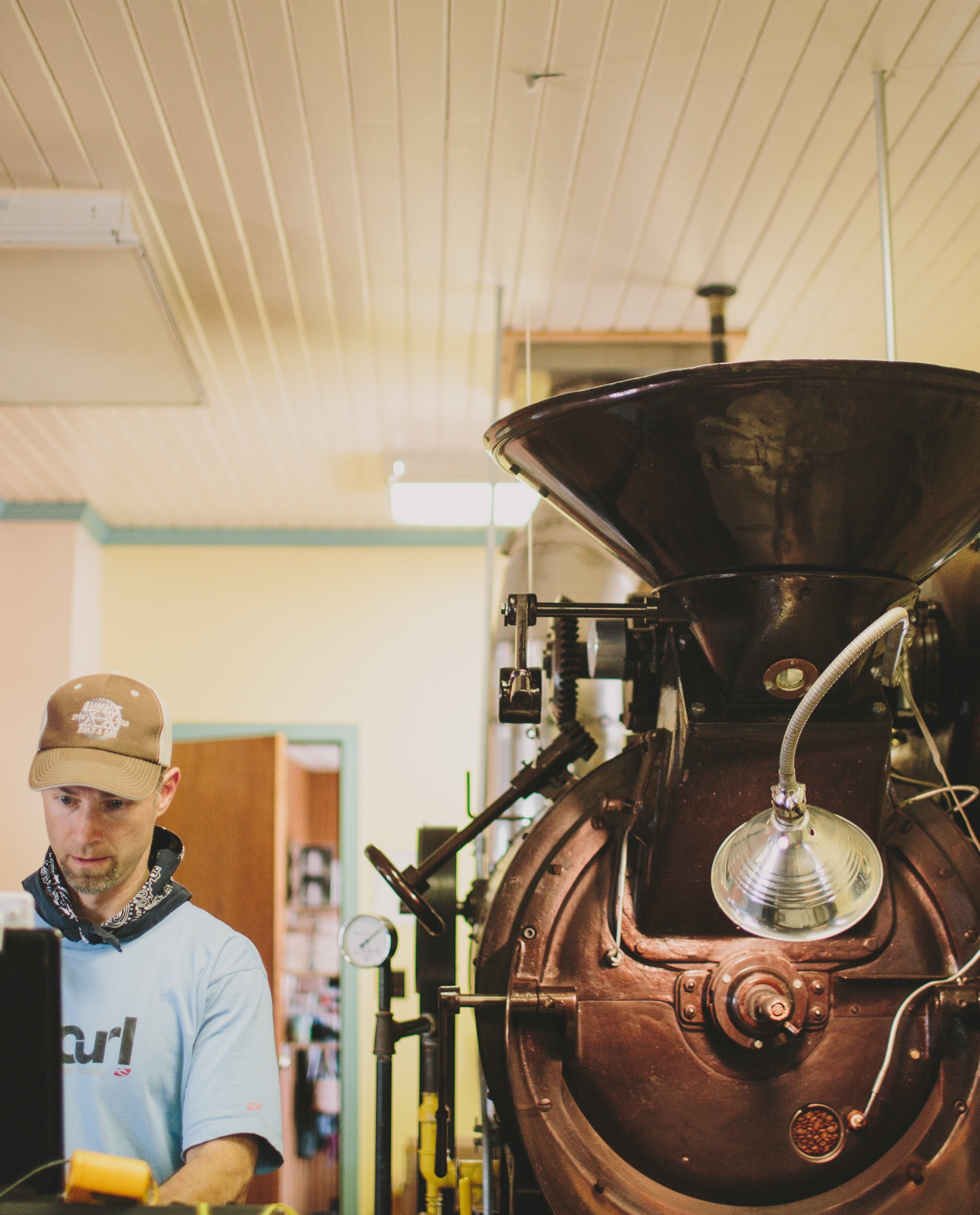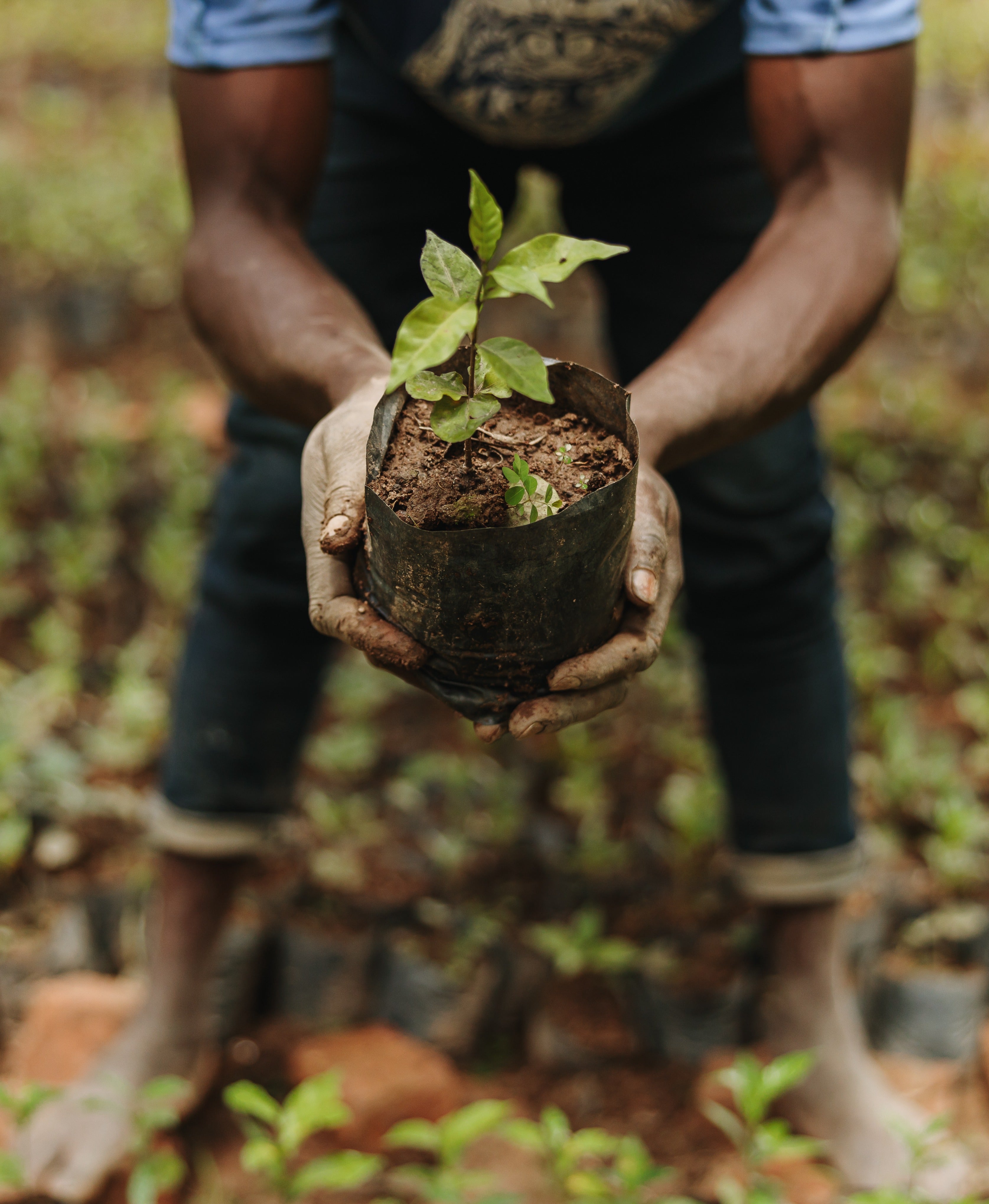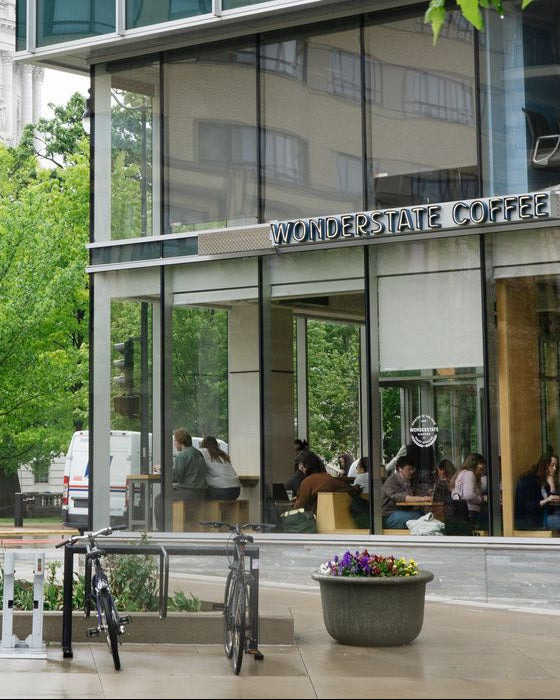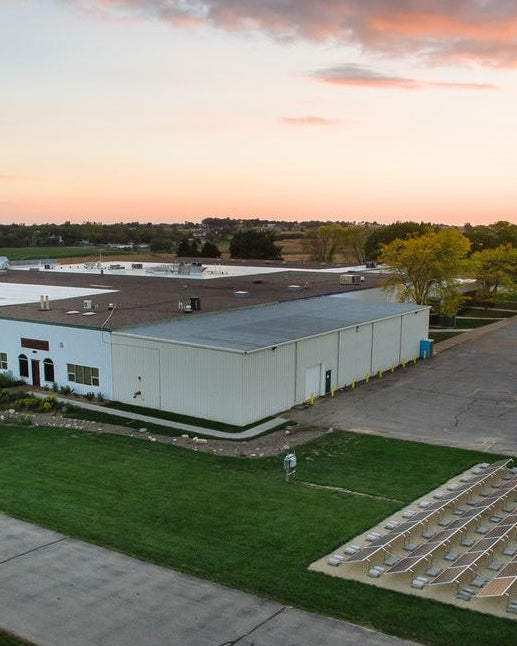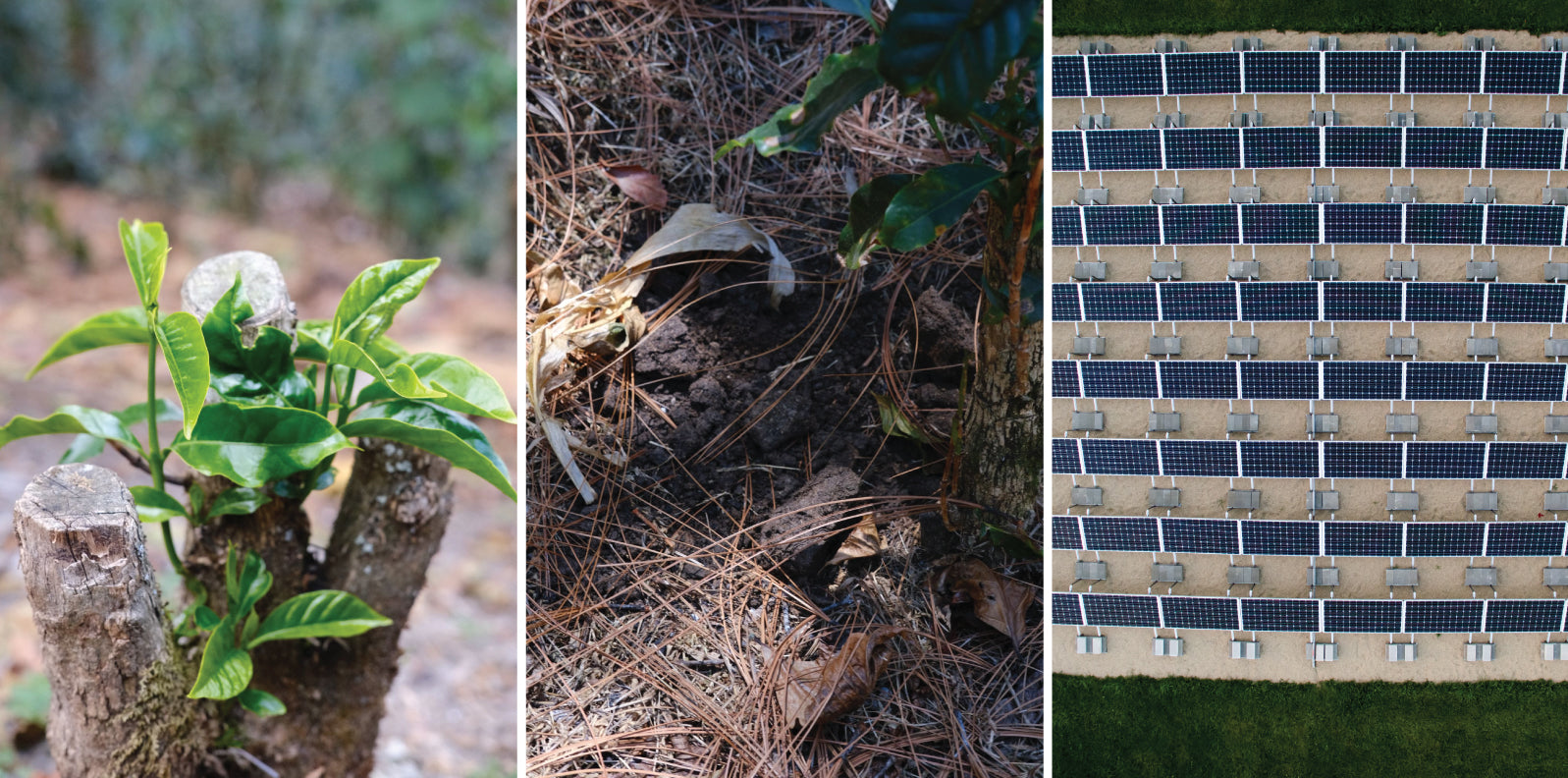
Pictures 1 and 2 above show pruning and organic input trenching near the base of the coffee plant in Guatemala.
TL;DR: Organic agroforestry farming is a nature-based climate solution and can operate at carbon-neutral or even carbon-negative rates.
We’re excited to have access to this data, which supports the case for organic farming as it relates to protecting the land on which coffee is grown. It’s these sustainable, organic farming practices that help ensure a future for the specialty coffees we’ve come to love and cherish.
The following information was adapted from this blog posted on Cooperative Coffee’s site.
Coop Coffees has spent the last three years working with partners to collect, verify, and analyze carbon footprint data from over 250 farmers managing 370 coffee parcels. Their research has produced some important insights into the specialty coffee growing industry.
-
Organic agroforestry farming is an important nature-based climate solution, and can operate at carbon-neutral or even carbon-negative rates. Among the 370 farm parcels assessed (representing 253 farmers), 62% were carbon negative, with a median carbon footprint of negative 3.7 kilograms of carbon dioxide equivalent (CO2e) per kilogram of green bean equivalent (GBE) coffee produced. Another 20% operated near carbon neutral, generating less than 1 kilogram CO2e per kilogram of coffee GBE. Across the sample, they saw median carbon emissions of negative 1.2 kg CO2e per kilogram of coffee.
- Key drivers of emission removals are application of organic fertilizer, using pruned tree material as compost and planting shade trees. The most significant driver of emissions is land use change, especially forest conversion or degradation.
Several farm activities can result in both carbon emissions and removals, with the net result depending on the context and specific practices used. Two examples are organic fertilization and tree pruning.
The production of organic compost, for example, generates emissions, which are then partially or fully offset when the compost is incorporated into the soil. Coop Coffees was particularly surprised to see the different footprints associated with tree pruning practices. For example, chipping pruned materials led to a jump in sequestration, while burning led to a similar jump in emissions.
These results demonstrate the power of organic agroforestry to sequester carbon and fight climate change. Of course, the growers we purchase from have been champions of nature-based solutions to climate change before that term existed, and before carbon was consistently part of the conversation.
In addition, 87% of the world’s approximately 570 million farms are smallholdings of around two hectares, occupying 24% of all agricultural land. Their footprint is minuscule relative to industrialized, high-intensity farming. Supporting smallholder, organic agroforestry is key to the long term sustainability of our food supply chains and a critical solution to our planet’s changing climate.
Coop Coffees is now taking project learnings and turning them into a compensation model to support this production model and the many benefits associated, from environmental conservation to socioeconomic justice.
We are proud to be a member of Coop Coffees and we are excited about the work they are doing to protect our planet and the future of coffee.
Read more

Driftless Brew Recipe on the Bonavita 8-Cup Brewer For those of you that use a drip maker each morning, we want to help you get the best from your brew. If you’ve got a different brewer, scroll to...
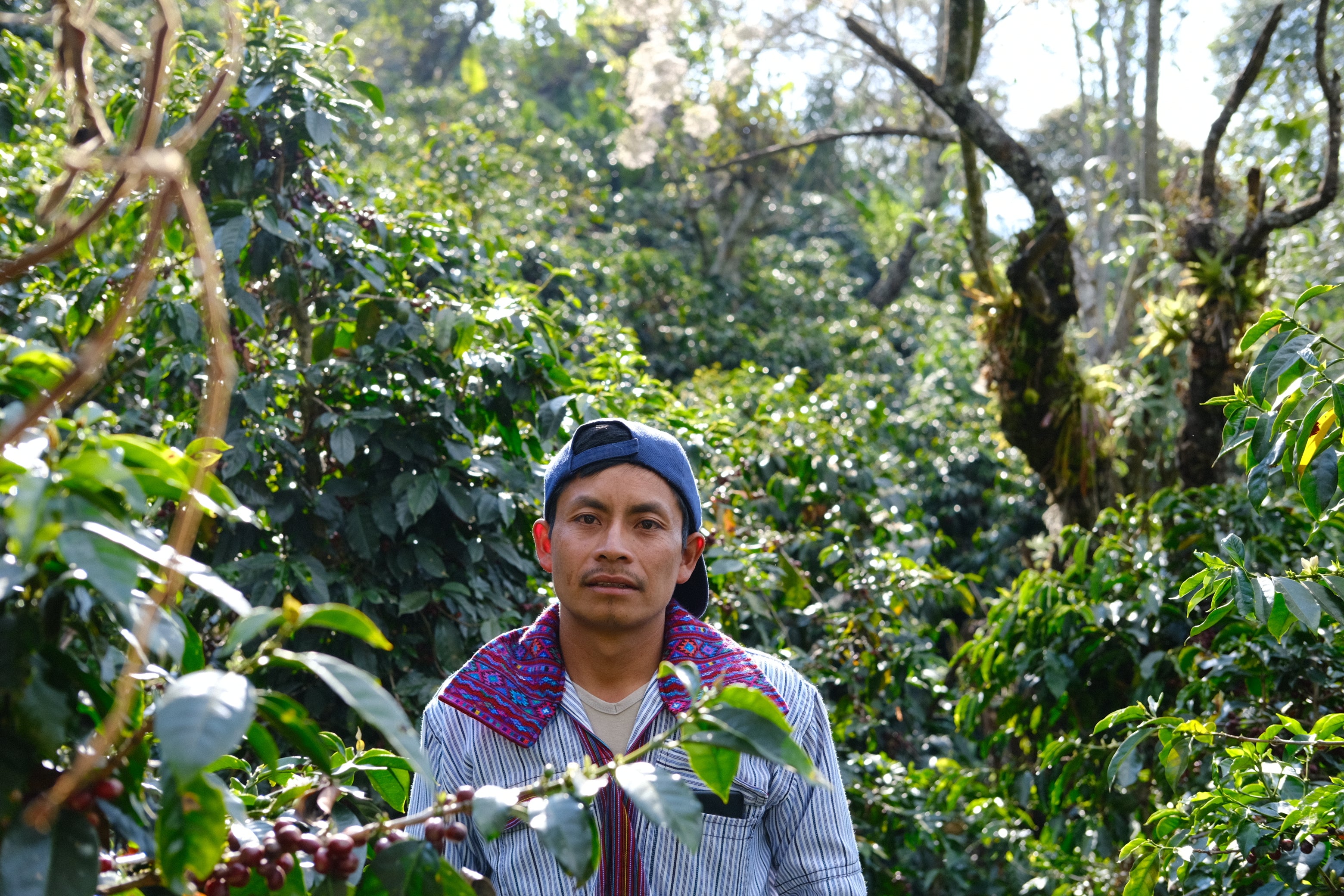
Porfirio Velasquez stands among his coffee plants on his 7-acre farm in the San Marcos department of Guatemala. It's been tough to keep quiet about the incredible Guatemalan coffees that'll b...


